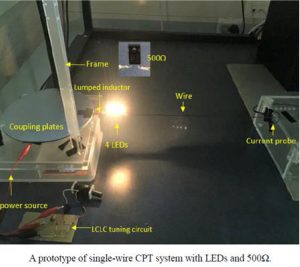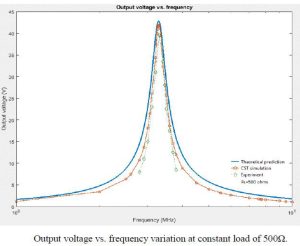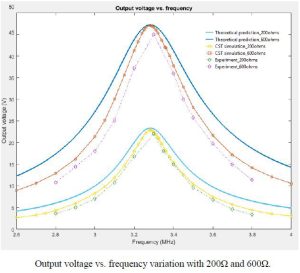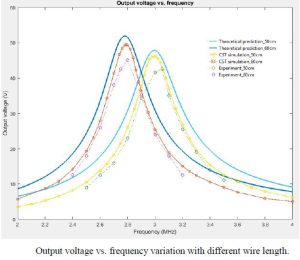Experiment Name: Modeling a Capacitive Single-Wire Wireless Charging System Considering the Earth
Research direction: wireless power transmission
Experiment content:
When the system circuit parameters are determined, change the resonant frequency of the system, the length of the single line and the load to observe the electric energy that the load can get.
Test purpose:
verify the correctness of the circuit model and CST simulation results.
Test equipment:
Signal generator S3302A, power amplifier Saluki SLA-HV-200D, 2 aluminum plates with a diameter of 200mm, an inductor of 470uH, a length (0.4/0.4/0.6m) of copper wires with different radii of 1mm, several resistances (200/500/ 600 ohms).
Experiment procedure:
In the experiment, the distance between the two aluminum plates is set to be 3mm, and the output voltage of the amplifier is connected to the bottom aluminum plate through an adjustable LCLC circuit to ensure that the input voltage of the aluminum plate maintains an amplitude of 100V at different frequencies. The upper aluminum plate is connected to an inductor and a load, and then connected to a copper wire, but the copper wire is suspended and not connected to anything, and forms a loop with the ground to supply power to the load. Since ground is not a very good conductor, the system efficiency is not very high.

Test Results:
The results show that single-wire capacitive wireless charging works with seemingly no loop, but actually forms a loop with ground.
The energy obtained by the load is also different for different grounds. When the system is in resonance, the load gets the maximum energy.







